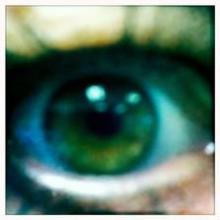Dr. Tzu, an ophthalmology resident at the University of Miami's Bascom Palmer Eye Institute, presented two cases highlighting the danger of removing eye goggles during IPL treatment for any reason.
In the first case, a 36-year-old female presented with burning, decreased vision, and photophobia in the right eye. She had undergone IPL treatment 1 hour before her symptoms began. She reported that her eye protection was removed during treatment of the eyelid area.
On eye examination, she was 20/20 in both eyes. However, her right pupil was 3 mm with decreased reactivity, compared with her left pupil, which was 5 mm and reactive. On slit lamp examination, inflammatory reaction was seen in the anterior chamber. She was treated with the steroid dexamethasone.
At 2-week follow-up, the patient's inflammation of the eye had improved; however, posterior synechiae was noted, as was iris transillumination defects. Topical steroids were increased.
At 2 years, the patient still has photophobia, iris defects, and abnormal pupils. She was given colored contact lenses to mitigate the photophobia.
In the second case presented by Dr. Tzu, a 27-year-old female presented 2 days after undergoing IPL treatment for freckles over the left upper eyelid. She reported that her goggles were removed for some applications of IPL to the eyelid. She reported pain, photophobia, and redness in her left eye.
On eye exam, she was 20/30 in the left eye. Her right pupil was 5 mm and reactive, while her left pupil was 3 mm with minimal reactivity. On slit lamp exam, inflammatory reaction in the anterior chamber of her eye could be seen. She was treated with topical prednisone.
At 3-week follow-up her vision had returned to 20/20 in the left eye and inflammation was improved. Posterior synechiae was noted, as was iris transillumination defects and atrophy.
The patient continues to have photophobia and glare, and is unhappy with the cosmetic asymmetry between her two pupils, Dr. Tzu noted.
Shutter goggles need to be worn by the clinician, and patient's need to wear nontransparent goggles. For treatment around the eye area, corneal shields can be placed directly on the globe area of the eye.


